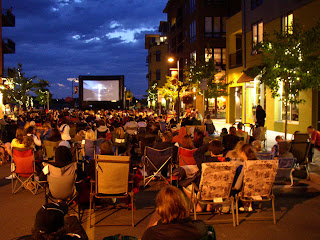Forty PostFilm Perspectives
- PostFilm supplements and supplants the modernist project of Film - its heavy demands on capital; its specialisation and division of labour; its guild restrictions; its white male supremacy and its glossy media moguls.
- PostFilm is an interaction between the emerging vitality of the community and the enriching ambition offered by an artistic outlook. It is process and product.
- PostFilm embraces innovation and creativity but it also critically inhabits the life forces latent in tradition and ‘the past.’
- PostFilm overthrows the capitalist structures, metaphors, motivation, ego-laden late capitalist film processes and products.
- PostFilm is everyday. It is a cultural materialism more than a textual postmodernism. Kant’s logical tact, tricks of Homer’s Odysseus and untheorized ordinary life of Michel de Certeau.
- PostFilm shakes hands with visual studies, visual anthropology, and video ethnography; with participatory and community media. It’s the School and the University which fragments power, and polices disciplinary boundaries.
- PostFilm is Visual Plus because the visual cannot be isolated, bounded, commodified or self-contained without a necessary remainder. Let’s listen and look. Enact. (Trans-) Form temporary alliances, co-working relationships. Seek out the pool and unlock the skills of the oppressed. Their lifeworld is seldom a desert; just as a desert is never a desert. (Freire)
- PostFilm celebrates the multiple convergences between film, music sound worlds, games and other technological-driven opportunities. Transmutation is divine. Plunder and proliferate. Gifts are more powerful than gadgets.
- PostFilm is inter-disciplinary and multi-disciplinary. The PostFilmers play across the arts, across traditional disciplines; he or she inhabits multiple communities and life worlds. Voyagers and fence-breakers. the chink in the armour. The hole in the wall. Bottom’s drama and ‘sub-plots.’
- PostFilmers courageously challenge the single rooted individual; PostFilmers oppose tedious repetitions and the boredom that besets the excessive and cramped divisions of labour, established roles and settled hierarchies, the rigid machinery of certification and professionalised elites.
- PostFilm embraces the ‘individual’ who embraces the collectivity of forces which are composing him or her. The PostFilm personality is enquiring and talkative. As Joyce said, Here Comes Everybody (H.C.E)
- PostFilm occupies three world or lifeworks: public services, the private sector and community-led activities (the Third Sector) and the Fourth Way. (Gurdjieff)
- PostFilm rejects the tyranny sometimes imposed by the geekmachines, technocracies and jargon-weavers; we celebrate those people and those sites which are helping us to decode and replace unnecessary technical jargon.
- PostFilm is pragmatic. It shamelessly embraces any tool that comes to hand. Bricolage. Beg, borrow and steal.
- PostFilm is a mixed bag of tricks. But the magic is the community not the machine.
- PostFilm is post credit crunch; for PostFilmers’ enforced leisure, there is opportunity, innovation, and enterprise.
- PostFilm welcomes artists who see themselves as entrepreneurs. Labouring to enrich the community we require a solid understanding of risk and ambition. Immaterialism is another mode of decadence.
- PostFilm notes that there have never been so many opportunities to explore diversity and difference. And to identify, discuss and celebrate what we have in common.
- PostFilm is a sanctioned universal piracy. Honest theft. Enlightened Piracy rules. A Robin Hood reversal that adds to the Common Stock.
- PostFilm says Farewell to Stars; they have expired in terms that they define as success. Farewell to the starry firmament of globalized products, brands, icons.
- PostFilm is haunted by its own extinction, the impossibility of its future presence. PostFilm in parenthesis.
- PostFilm questions the obsession with the 90 minute product. PostFilms are momentary, discontinuous, un-terminated. (Peter Greenway’s suitcases)
- PostFilm welcomes opportunities for byproducts. PostFilm is gymnastic multimedia. Recycle, re-use. PostFilm embraces all ethical products and productions for the common good. Co-opportunity and sustainability (John Grant)
- PostFilm welcomes fans and followers, relationship management, public relations and an antagonistic but warm relation to its critics. Ho, ho, ho.
- PostFilm notes the Loss of the Awesome, ‘He’s a film director’, ‘Hollywood’
- PostFilmers want more from the experience; they want the event. Let’s say that people want more than to watch content. They are coming together to discuss, participate, engage, co-create. Popcorn is not enough. Re-negotiate the Spectacle (Mikhail Bakhtin and Guy Debord)
- PostFilm finds opportunities in the lack of standardised structures and products for investors since that situation obstructs cross-colonisation. Pragmatic PostFilmers are tricksters who find a way to make their magic with the community, not against it.
- PostFilm retires from action the mobile army of grubby agents and the surplus of parasitic service providers and fees, the arts aristocracies and their bleating councils of denial and despair. (Nietzsche)
- PostFilm is the ultimate efficiency because it springs from the absolute commitments of its participants. (Marx)
- PostFilm brings joy to its participants rather than feathers for patrons and cash for investors.
- PostFilm is reciprocal, slippery, multi-faceted. PostFilm inhabits our life, we inhabit its lifeworlds. A renewal and encounter with Being. (Heidegger)
- PostFilm is a notion of experienced time that cannot be fully recovered: a less progressive, directional notion of time. Mediated subjects but not the immateriality of the inter-subjective. The trace of the other. (Derrida)
- PostFilm collectivizes and extends without limit the post-production phase “The process of editing film or video after acquiring the footage” Remix, mashup, wreckage. In the end is the beginning.
- PostFilm’s Progress is imperceptibly slow or fast, depending on your point of view. Fortunately, it lacks early visibility. It is constantly finding itself unfit. Major patrons have left the room. It is too small for government and too relevant for private backers. For the YouTubers it is exponential and omni-absent.
- The PostFilm Producer is a practice and a paradox.
- PostFilm Festivals are value-added. Festivals are more of an experience and less of a market. They are participant and community-led.
- PostFilm stops trying to be everything to everybody. A Global Commodity is not our objective. We say No! to the tyranny of the lowest common denominator; we always and everywhere affirm the validity of the remainder, the undigested, the uncompromised.
- PostFilm asks about the prehistory of film. Also the lost traditions. What can PostFilm rescue from the old studio system (‘a vast array of disciplines were brought together in the same place every day with the sole purpose of developing, making, and marketing films.’ Ted Hope) But we also note the criticism that "The studio assembly line smothered creativity."
- PostFilm democratizes the Grand Jury, but it does not abandon opportunities to make informed judgements. Cans not Cannes.
- PostFilm originated in Birmingham, West Midlands, UK, the home and source of Cultural Studies
Retrospective
"Let
us exhibit it instead as a cruel denunciation, as a painful testimony
to the level at which the peoples of the world have been forced to limit
their artistic creativity. The future, without doubt, will be with folk
art, but then there will be no need to call it that, because nobody and
nothing will any longer be able to again paralyze the creative spirit
of the people.
Art will not disappear into nothingness; it will disappear into everything." (Julio Garcia Espinosa) - Havana, December 7, 1969
“The alienation of the spectator to the profit of the
contemplated object is expressed in the following way: the more he contemplates
the less he lives; the more he accepts recognizing himself in the dominant
images of need, the less he understands his own existence and his own desires.
The externality of the spectacle in relation to the active man appears in the
fact that his own gestures are no longer his but those of another who
represents him”
(Guy Debord)



Comments
Post a Comment
My blog posts are exploratory rather than finished works. You are invited to add any comments below...